Freeganism is defined as a social movement of minimal participation in the economy by consuming wasted goods, specially food. We decided to analyze the freegan community of Madrid alongside the industrial processes of the food industry to create a system of radical freeganism, in which food has value at every stage, including after it is not fit for consumption. This system is implemented in the neighborhood of Lavapies on a communal and on an individual level, but since it is standardized, the system could be used in any city by adapting to the food culture and industry anywhere.
In collaboration with Mae White and Anurag Phalke.
Research and Context
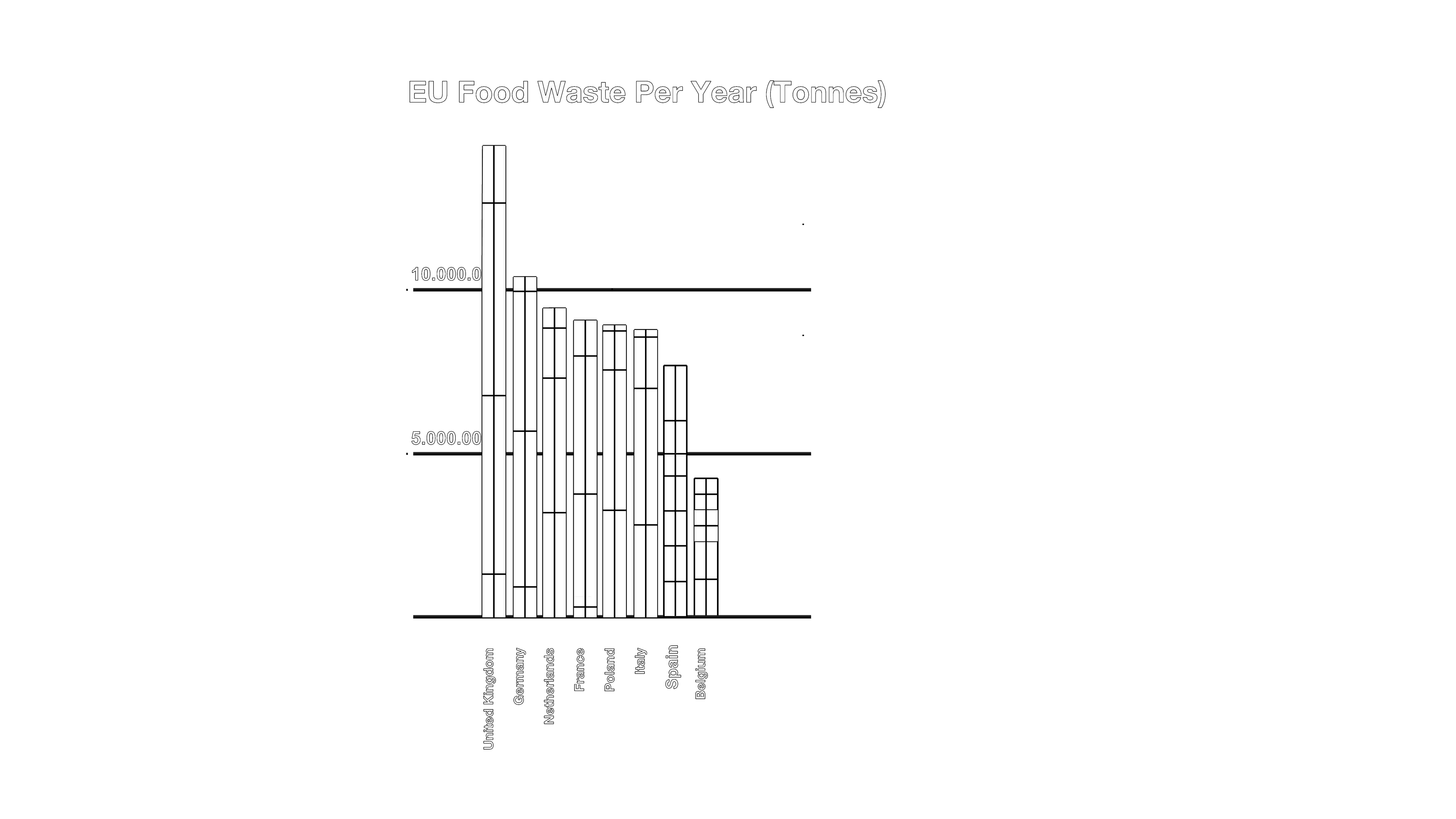
At the beginning of our research we realised that at an industrial level, Spain wwas one of the top producers of food waste in Europe.

European regulation is broad regarding when and how items are considered waste. It states that stores and supermarkets may throw away any food item they consider is not valid for sale, even if it is in perfect condition.

We developed a visual on when different food items are considered edible vs. waste. We came to the conclusion that all items are considered waste after being placed on the bin, and as such, they loose all their value.

We analyzed what we called Normal Consumers, or consumers who do not question the current system's shortcomings. They consume food in a linear way: buying, cooking, eatiing, and discarding.
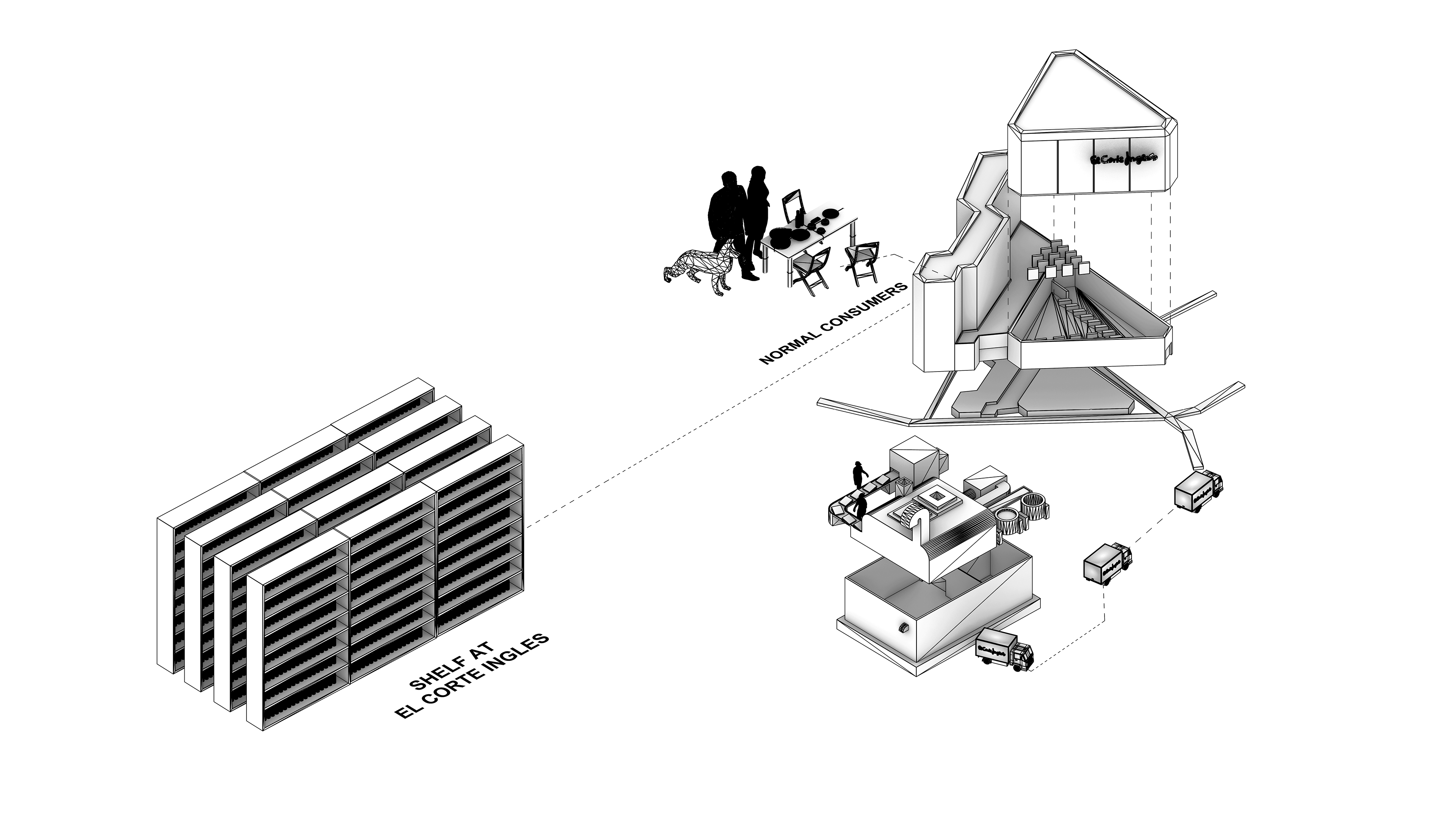
We wanted to showcase the current consumer cycle and the current over-consumption practices carried out by supermarkets. All shelves must look full at all times, leading to lots of food being thrown out to make space for new foods.

After the supermarket and consumers throw away food, it is taken by the mmunicipal waste management system to a landfill 3 hours from Madrid. There, the food rots, un-used, and releases methane and greenhouse gasses.

In our search for a different consumption model, we discovered Freegans. Fregans are people that, either out of necessity or out of ethical convictions, chooses to consume from the trash and not participate in the traditional economy. Freegans are people who see value in food even after it is thrown away.
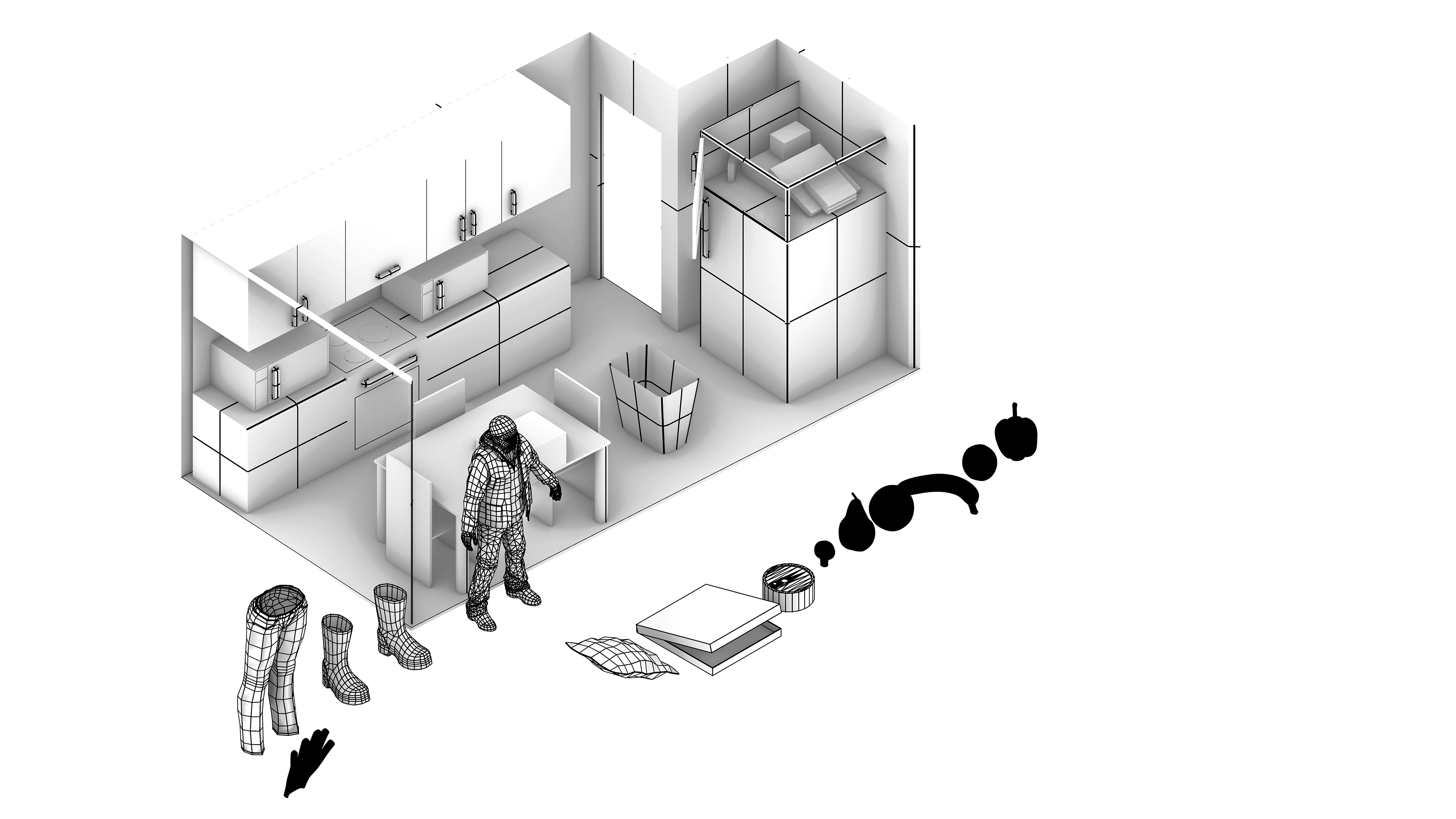
By doing field research and conducting interviews with ethical freegans, we constructed a model of their 'average' home. Occupied housing, furniture and clothes collected from the trash, lots of appliances found or gifted, and the refrigerator full of recovered goods, specially fruits and vegetables.
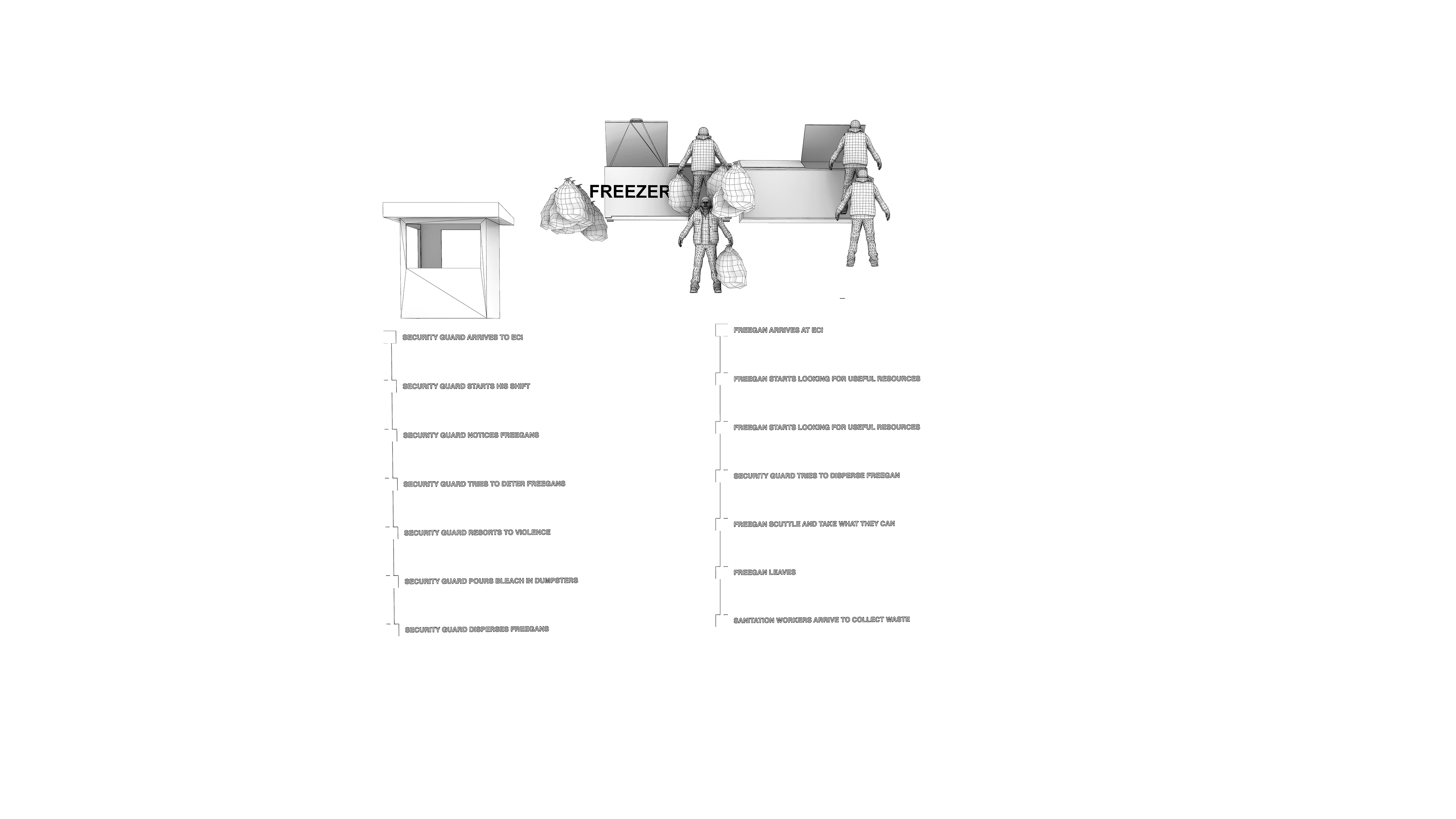
They told us about their usual schedule to search for food, and how they often find themselves in hostile situations because of security guards and waste workers, even though wwhat they do is technically legal.
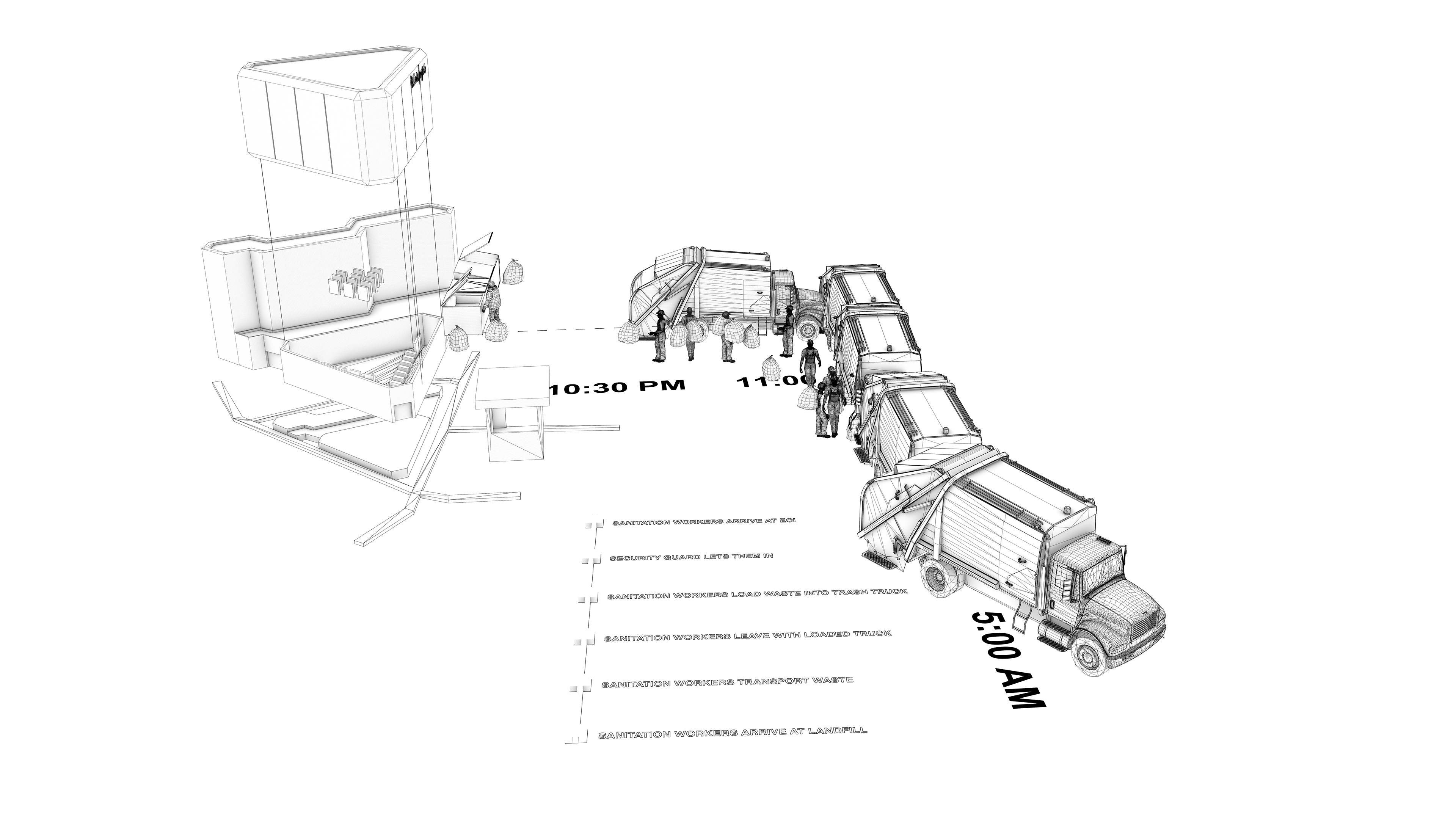
They go to supermarket bins just after the supermarket closes, and they have to act quick because waste trucks arrive just an hour after closing.
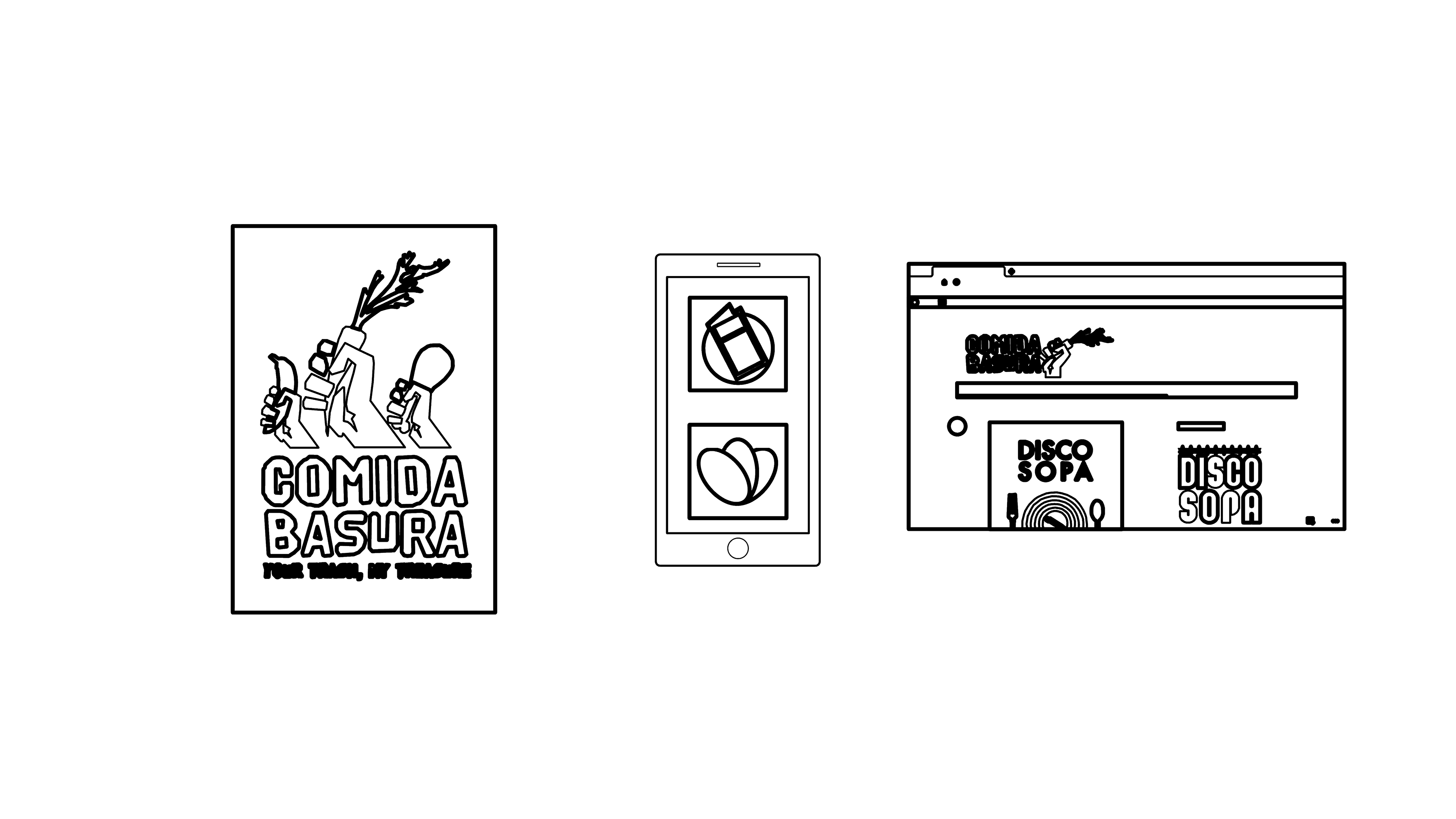
We also discovered freegan forums and apps used in the city, with tips and locations on how and where to find food.

There have also been public temporary interventions done by freegans, for example one in which they shared free food around Lavapiés.

For comparison, we also researched freeganism in other countries, and it was clear to us that the linear food-to-waste model does not work anywhere.
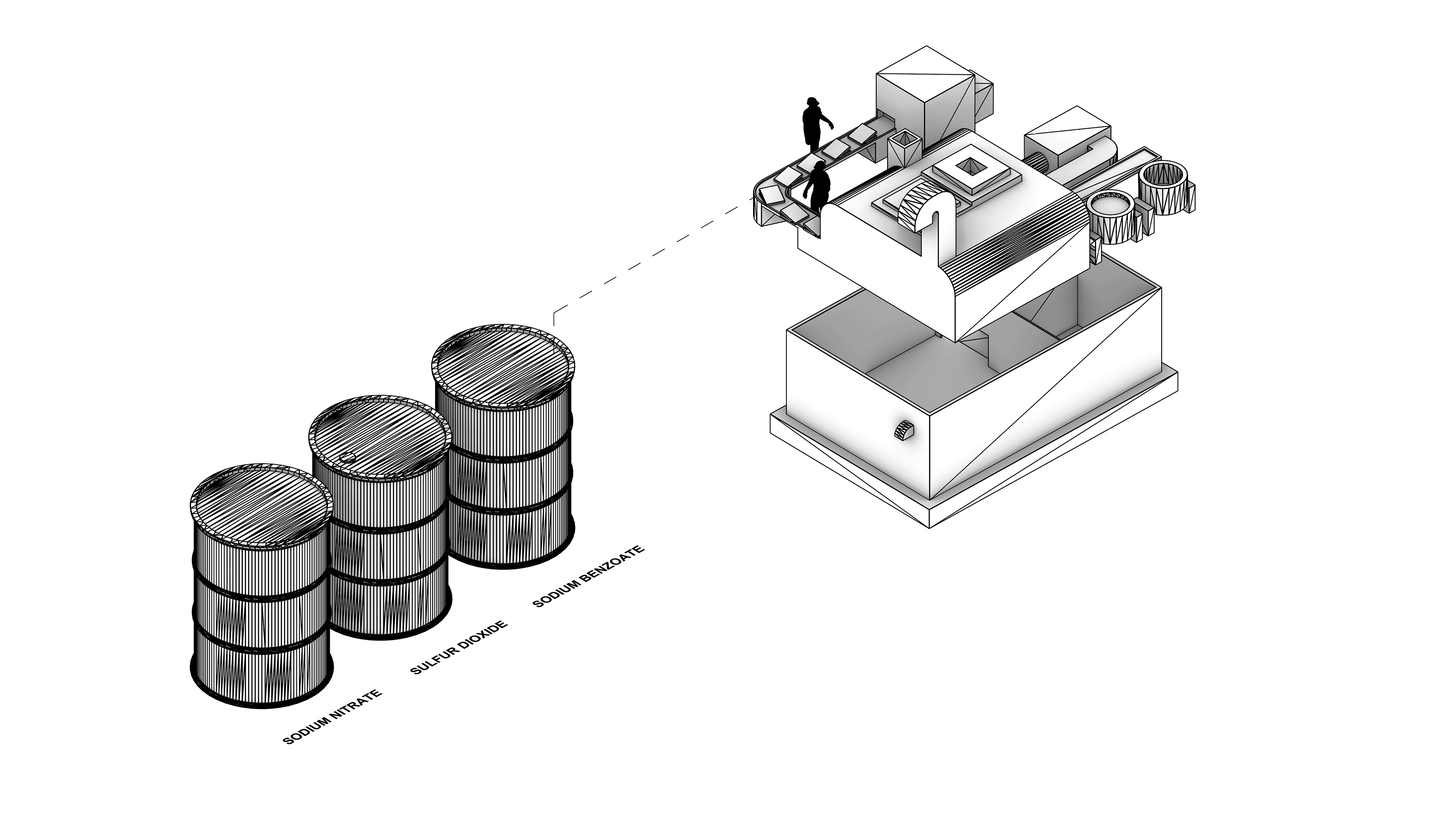
We dug into the chemicals added to food to make it look better for longer.
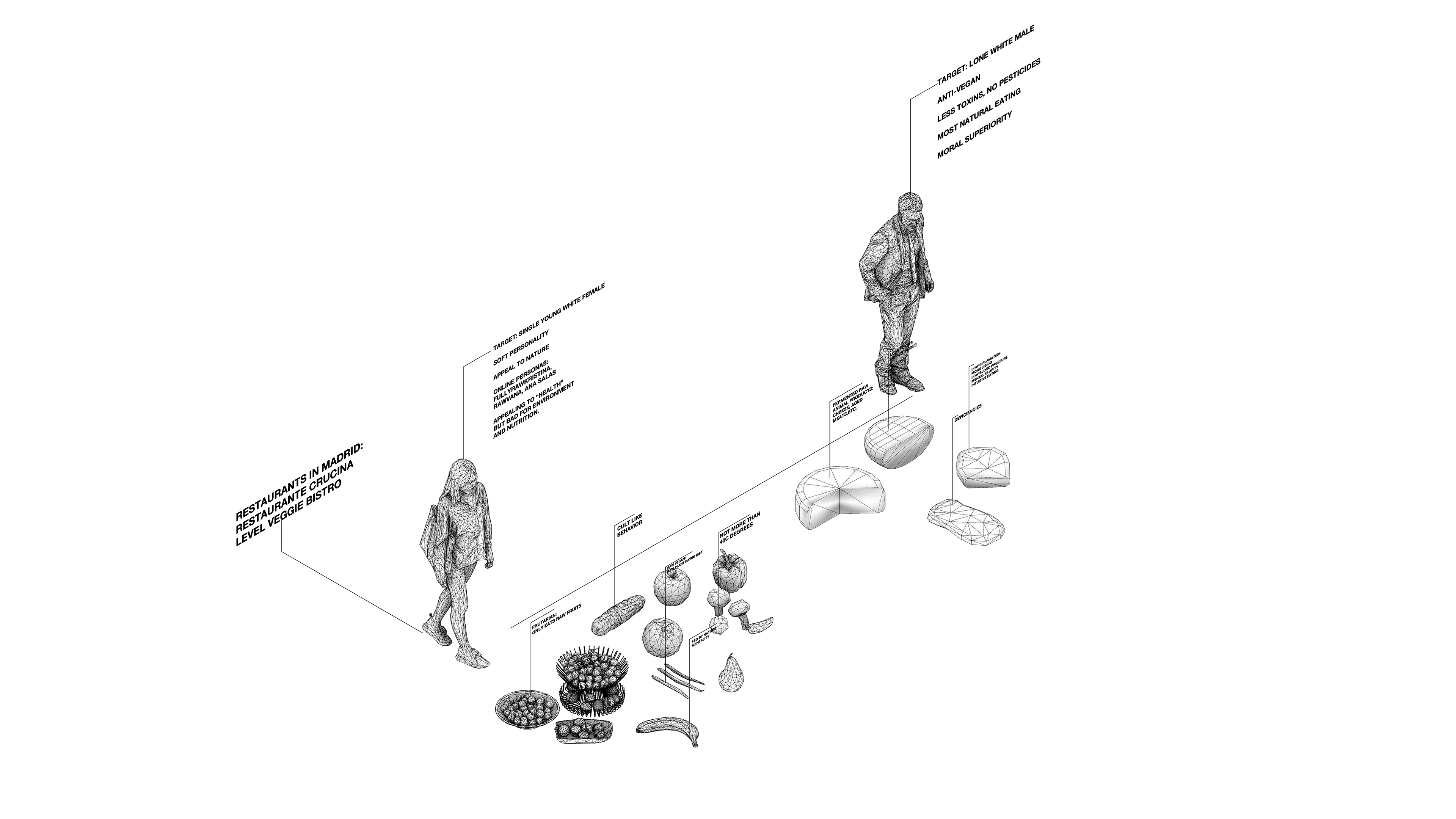
Lastly we researched other out-of-the-norm diets, or extreme diets, by 'enlightened' consumers. We researched twwo extremes, raw veganism and raw carnivourism. Doing this we came up with three types of consumers: The cooked (normal consumers), The Raw (extreme dieters), and The Rotten (Ethical Freegans).
System Development and Implementation
After researching the context and developing a map of sources of implementation, we decided to design a circular food system, in which food has value at every stage, even after being thrown out. The system was implemented in Lavapiés, Madrid, and dealt with managing and sourcing food waste, possible uses, energy creation from wasted goods, and ways to provide free food for the community, operating 'on top' of the current linear system. This will take Freeganism from an individual and private practice, to a communal and public effort to see the value of food at every stage.
This system can be applied to other neighborhoods or cities by researching the context and adapting accordingly.
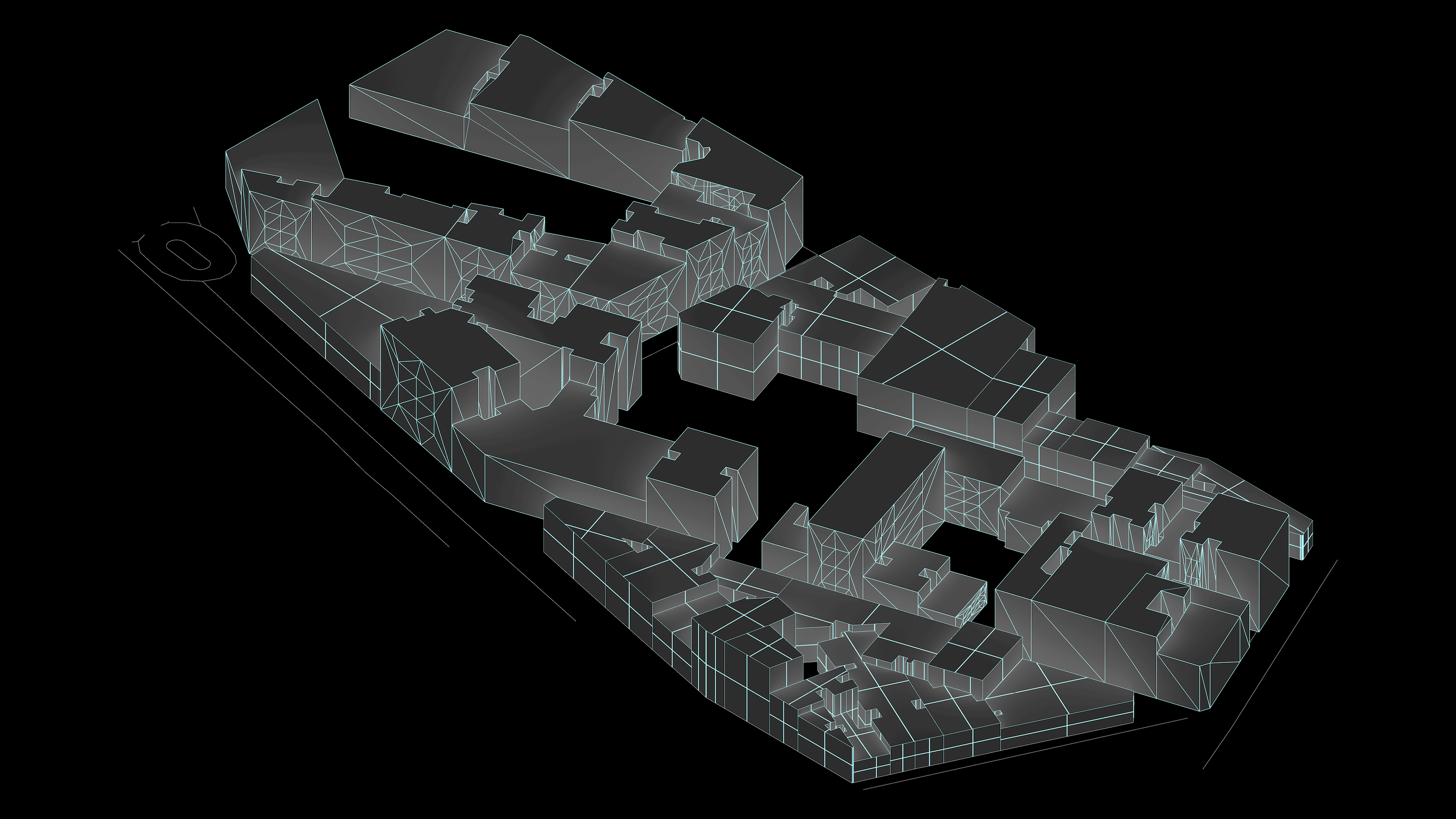
Lavapiés, where the system will be placed at.
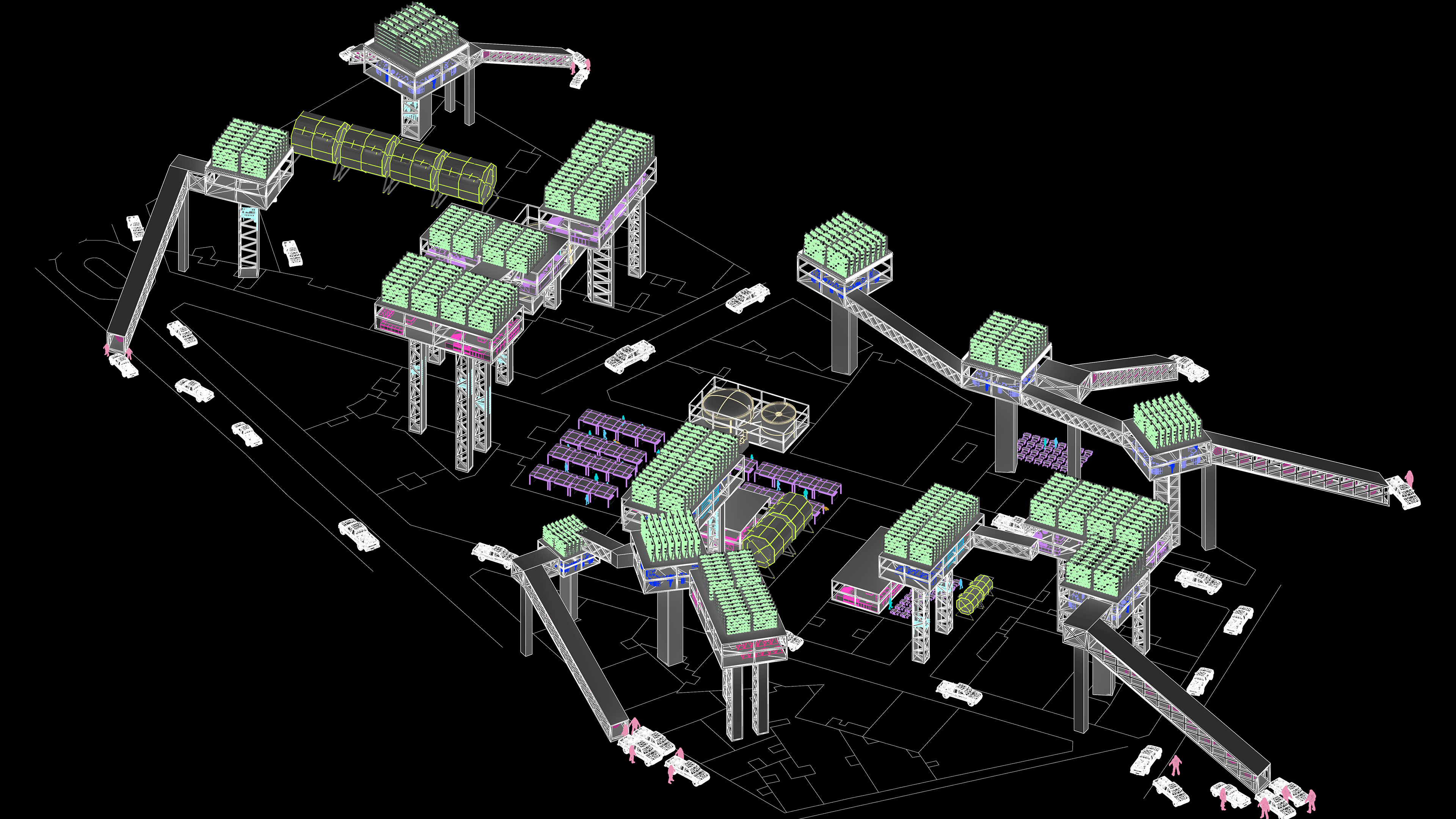
System Structures Placed on top of the city.

The new system implemented and operating in the neigborhood.

Freegans will go around city supermarkets and collect wasted goods collectively

After arriving, the food will be sorted into 'apt for consumption', 'apt for fermentation', and 'apt for compost'.
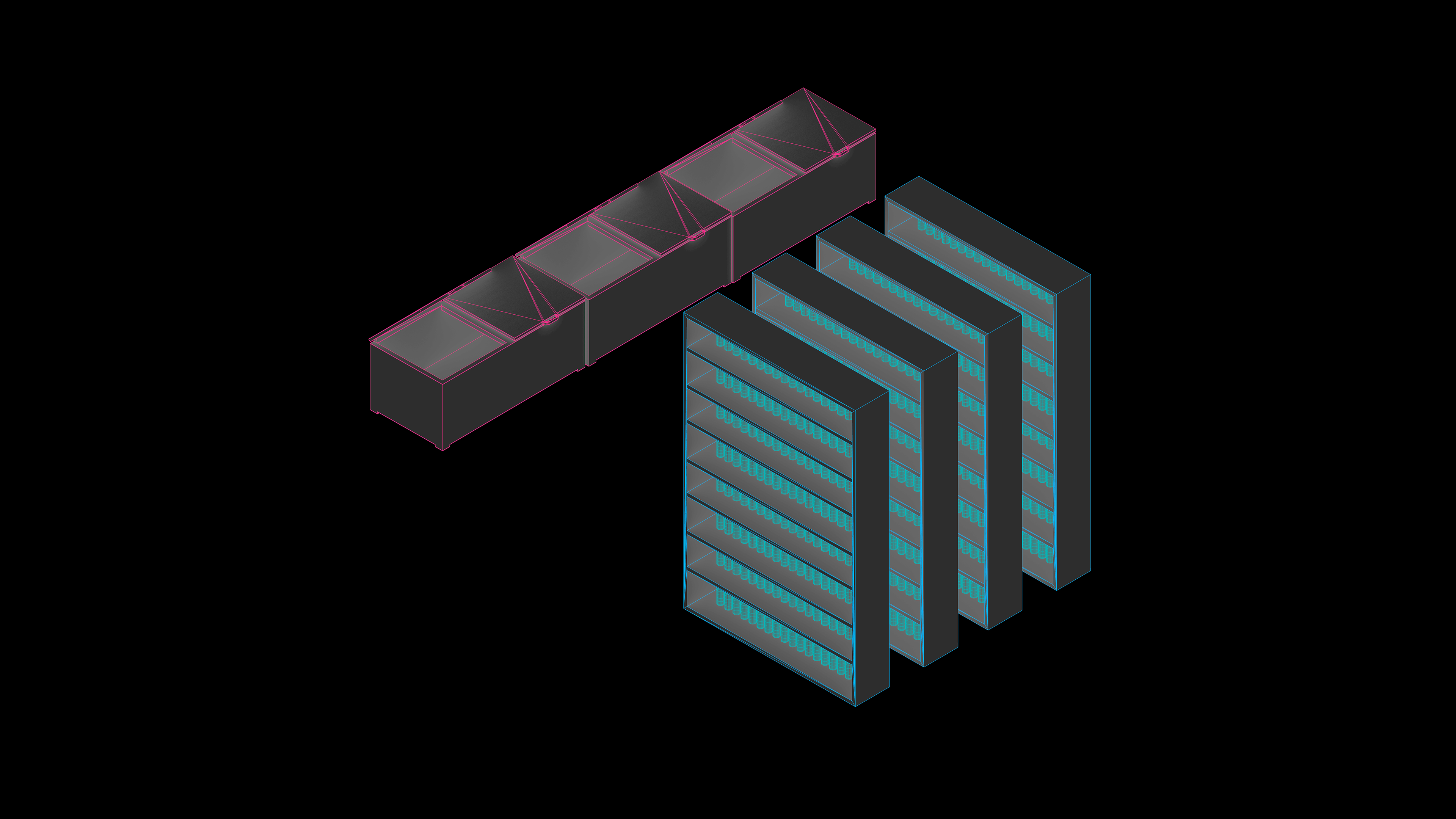
The food apt for consumption will be stored in giant refrigerators and shelves.

It will get cooked in comunal kitchens and shared in Free Food Courts and Free Markets around the neighbourhood.

Free Food Court

Free Food Market
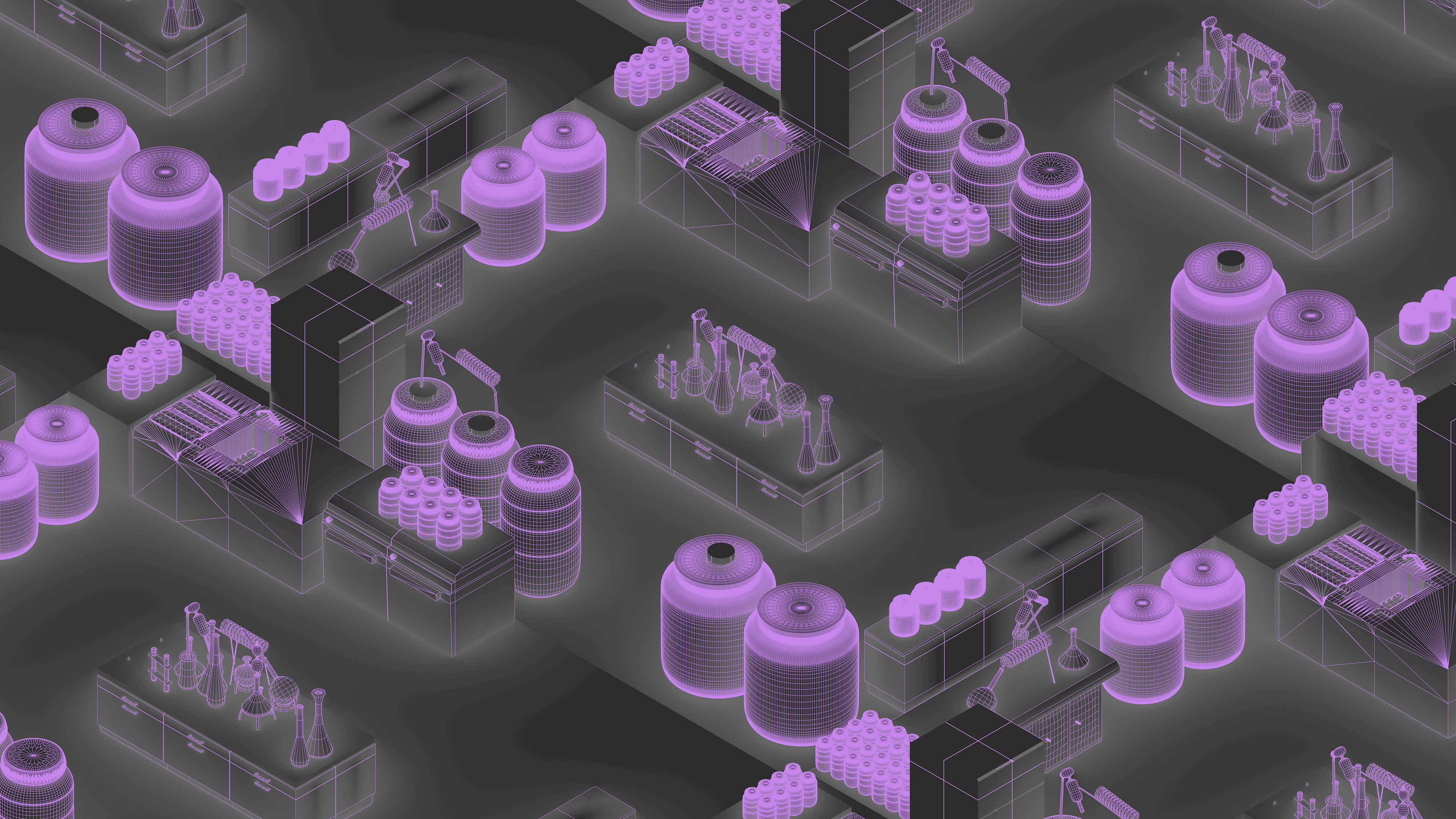
Fermentation, or controlled rotting, will extend the life of items and make them apt for consumption.
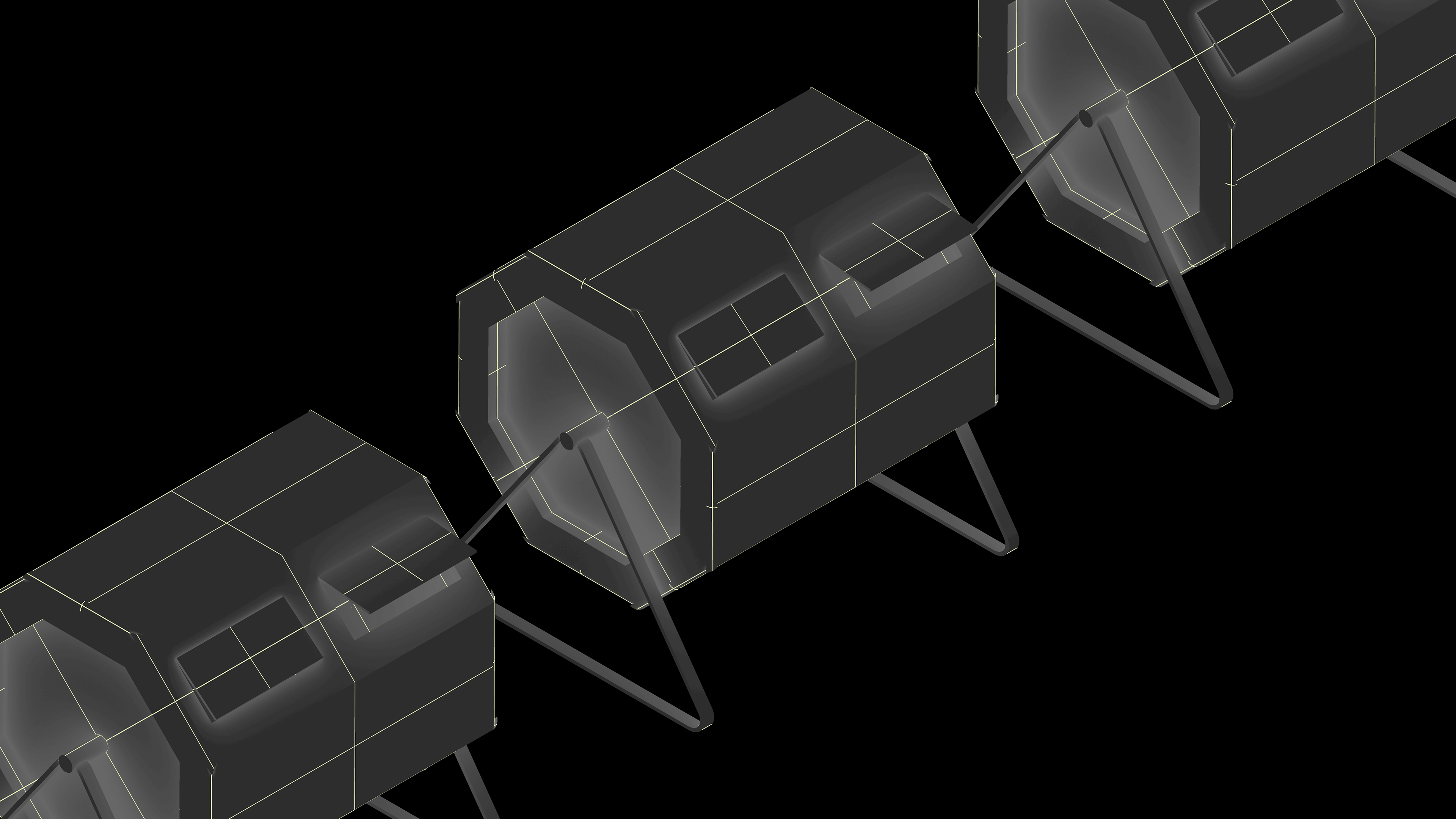
Food apt for compost will be placed in compost bins around the city, where it will turn into biogas and organic soil.
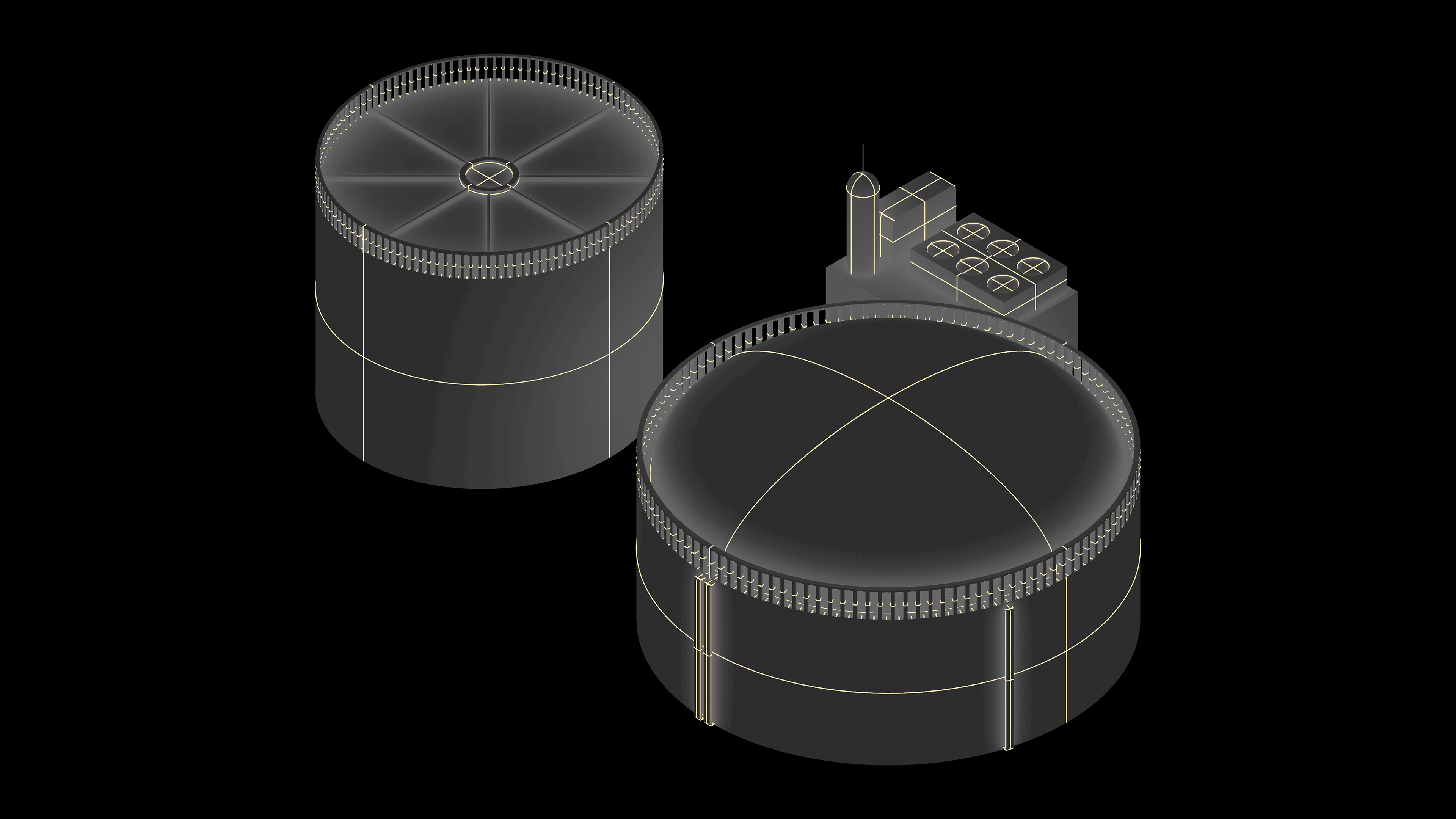
Biogas from food waste will supply energy for the system and the neighbourhood.

The soil will be used in communal vertical gardens, which will create green spaces, filter aiir, and create more free food for the community.



Freeganism will be also implemented individually in balconies around the neighbourhood.










